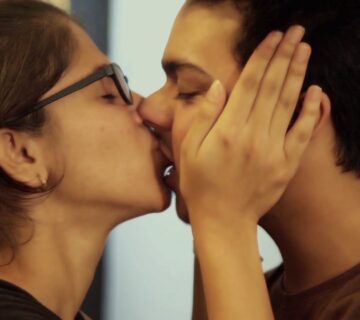A Kiss for the First Time is a major milestone, blending anticipation, nerves, and excitement in a moment you’ll remember for years. But with all the advice, pressure, and myths floating around, many wonder: how do you make your first kiss natural, unforgettable, and truly special.
Why Your First Kiss Is a Big Deal
First kisses aren’t just about lips; they’re about stepping confidently into deeper emotional and physical intimacy. Research shows your first meaningful kiss often becomes a lifelong memory, influencing self-confidence and the early trajectory of romantic relationships. But the best first kisses aren’t choreographed—they’re felt, shared, and enjoyed in the moment.
Preparing for Your First Kiss
1. Hygiene Is Essential
-
Brush your teeth and use mouthwash before your date to ensure fresh breath.
-
Keep mints or gum handy (spit them out well before the moment arrives).
-
Use lip balm for soft, kissable lips, but avoid sticky glosses that make kissing awkward.
-
Dress for confidence—wear what makes you feel at ease and attractive.
2. Emotional Readiness
-
Only kiss when you feel genuinely excited and safe. If you’re anxious or not sure, it’s better to wait.
-
Never feel pressured; mutual desire is the foundation of a great kiss.
Setting the Scene: Timing and Environment
-
Choose a private, calm, or semi-private spot: Quiet parks, cozy rooms, or a peaceful walk are all great options.
-
Build comfort: Enjoy close conversation, laughter, and simple touches like holding hands or touching an arm to foster intimacy.
-
Read the cues: If your partner maintains eye contact, leans in, or touches you, these are strong signals they may be ready for a kiss.
Consent Is Key
-
Ask before you kiss: “Can I kiss you?” or “I’d really like to kiss you now, is that okay?” is not only okay—it’s often seen as romantic and respectful.
-
Look for nonverbal cues: Sustained eye contact, moving closer, and light touches all indicate interest, but always check in if you’re unsure.
How to Kiss for the First Time: Step-by-Step
1. Build Anticipation
-
Step closer gradually, making your intentions clear through subtle body language—smile, make eye contact, and lower your voice in intimate conversation.
-
Touch them softly: Hold hands, touch their arm, or rest your hand on their back to signal closeness.
2. Close the Distance
-
Lean in slowly—give your partner time to see you coming and respond, which builds anticipation.
-
Tilt your head slightly: Most people tilt right, but adjust based on your partner to avoid bumping noses.
3. Initiate the Kiss
-
Look into their eyes: As you draw closer, maintain gentle eye contact and perhaps glance at their lips.
-
Close your eyes just before your lips meet—this heightens intimacy and avoids awkward staring.
-
Start with a gentle, closed-mouth kiss: Press your lips lightly to theirs, keeping your lips soft and relaxed.
-
Mirror your partner’s style: If they respond enthusiastically, you can slowly increase pressure or duration; if they seem still, keep it brief and simple.
-
Breathe softly through your nose to avoid running out of breath if the kiss lasts.
4. Hand Placement
-
Place your hands thoughtfully: On their shoulders, back, or gently cupping their face—whichever feels most comfortable for you both.
-
Don’t let your hands wander in the early moments; respect comfort zones and move slowly.
After the Kiss: What Next?
-
Smile or laugh: Break any remaining tension with warmth; a giggle or genuine compliment (“That was really nice”) is always welcome.
-
Stay close: Hold their hand, offer a hug, or share a few words about the moment.
-
Respect their space: Don’t feel the need to rush into another kiss—you can always check, “Would you like to kiss again?”.
Advanced Tips & Common Mistakes
Dos
-
Follow their lead: Mirror their movements and intensity.
-
Keep it light and simple on the first try: Skip tongue unless both are clearly interested.
-
Relax: Avoid stiff lips or posture; a great kiss is about connection, not perfect technique.
-
Embrace awkwardness: Most people feel nervous; little accidents or laughs can make the kiss more memorable.
Don’ts
-
Don’t use too much pressure or tongue on the first kiss.
-
Don’t ignore signals—if your partner pulls away, pause and check in respectfully.
-
Don’t overthink every move: Trust the flow and focus on mutual enjoyment.
-
Don’t skip hygiene—bad breath or dry lips are instant mood-breakers.
Frequently Asked Questions
What if I mess up or feel awkward?
That’s normal, and often endearing! Smile, laugh, and keep going—most partners don’t expect perfection.
How long should the first kiss last?
Short and sweet is usually ideal. You can always share a longer second kiss if the mood feels right.
Should I talk right after?
A gentle compliment, smile, or quiet moment together is perfect. You don’t need to say much—let the moment breathe.
What about using my tongue?
Stick to a closed-mouth kiss for the first time. If you linger and both feel comfortable, you can gradually introduce more, but only if it feels natural for both.
Read More: First Kiss Mistakes to Avoid: Guide for Beginners
Final Thoughts: Let Your First Kiss Be Yours
There’s no such thing as a “perfect” first kiss—only a real one. With consent, relaxed confidence, and genuine connection, your first kiss can be memorable, magical, and the beginning of a beautiful journey. Focus less on technique and more on presence. Breathe, lean in, and let your feelings be your guide—the magic of the first kiss is in the moment you share








[…] Read More: How to Kiss for the First Time: Step-by-Step Guide to a Memorable, Human First Kiss […]